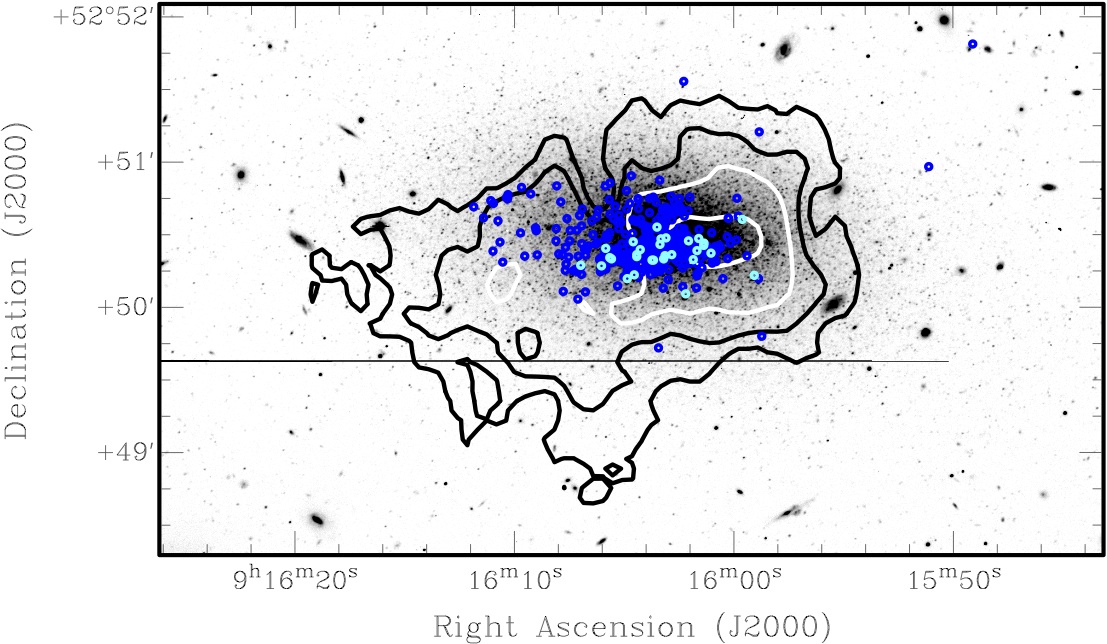Daily Image
25-07-2011VV124: a galaxy re-born
| Submitter: | Tom Oosterloo |
| Description: | The dwarf galaxies in the direct vicinity of the Milky Way are a very interesting class of objects. They are the smallest galaxies known (the smallest of them has a mass about one-millionth that of the Milky way). In fact, some are so small that according current theories of galaxy formation they should not even exist. Because these dwarf galaxies are very nearby, one can study them in the greatest detail. From basically every individual star one can determine many important properties, such as mass, age and chemical composition. From this information, one can reconstruct in detail the complete history of the formation of the stars over time. Such studies often lead to very puzzling results. It turns out that all dwarfs formed stars from the very beginning, but, for reasons not entirely understood, in most dwarfs the star formation stops fairly quickly, i.e. after only a few giga-years (1 Gyr = 109 yr). Next, nothing happens for the rest of the life of the dwarf. There are few galaxies, however, in which star formation suddenly starts again after this long period of inactivity. Recent observations of the nearby dwarf VV124 show that this dwarf is such a galaxy. An analysis of deep observations done with the Hubble telescope shows that VV124 formed stars at a healthy rate from 13 to 10 Gyr ago, but then it stopped forming stars and VV124 was a quiet galaxy for almost 10 Gyr. However, very recently (less than a few hundred million years ago) suddenly a small amount of star formation started again. The figure shows the location of these young stars in VV124 (the blue dots). It becomes very interesting when the location of these young stars is compared to the distribution of the small amount of neutral hydrogen present in VV124 (the contours, as determined from WSRT observations): the young stars are (sort of) found where the density of HI is highest. This in itself is not surprising (stars form from gas after-all), but crux of the biscuit is that the kinematics of the HI suggests that the HI in VV124 was accreted only recently. This suggests that sudden re-starts of star formation in dwarfs is connected to occasional gas accretion. There is, in fact, an even more interesting aspect. One possible reason the early star formation stops after a relatively short time is that the young stars just formed put so much energy in the gas of the dwarf that the gas is blown out of the galaxy. No gas left in the dwarfs means no more star formation. However, in some circumstances the gas expelled at early times can fall back to the dwarf at much later times (re-accretion). Once some gas is re-accreted, star formation can start again after a long period of inactivity. Perhaps this is what we see happening in VV124. For more details, see the recent paper by Bellazzini, Perina, Galleti and Oosterloo accepted for A&A ( http://arxiv.org/abs/1107.2556 ) |
| Copyright: | astron |
| Tweet |  |
